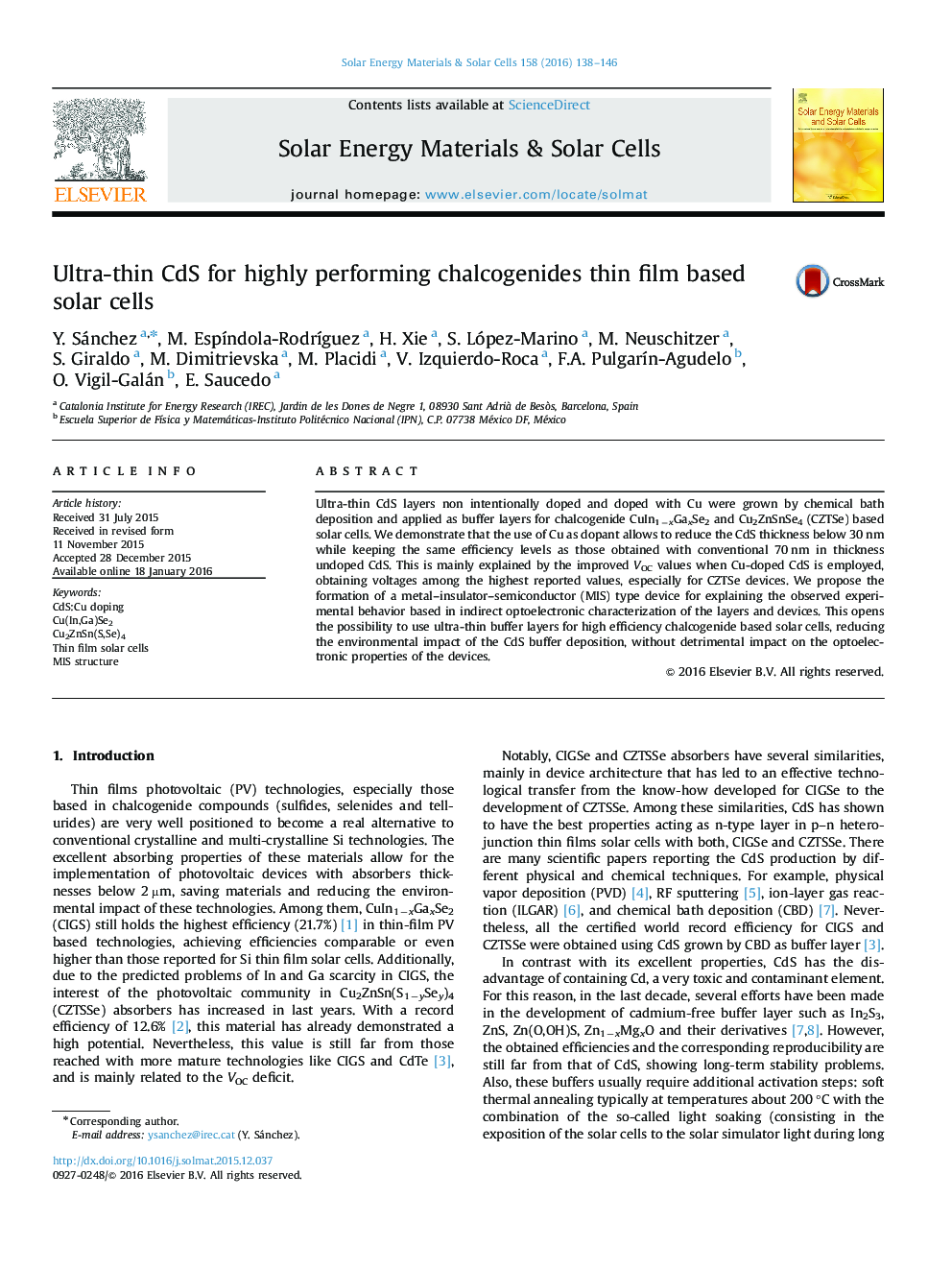| Article ID | Journal | Published Year | Pages | File Type |
|---|---|---|---|---|
| 6457628 | Solar Energy Materials and Solar Cells | 2016 | 9 Pages |
â¢CdS doped with Cu is tested as buffer layer in chalcogenide based solar cells.â¢CdS:Cu allows to reduce the buffer layer thickness below 30 nm.â¢The JSC of the devices increase, whiles the VOC, FF and efficiency are unaffected.â¢The formation of a MIS type structure for the solar cells is proposed.
Ultra-thin CdS layers non intentionally doped and doped with Cu were grown by chemical bath deposition and applied as buffer layers for chalcogenide CuIn1âxGaxSe2 and Cu2ZnSnSe4 (CZTSe) based solar cells. We demonstrate that the use of Cu as dopant allows to reduce the CdS thickness below 30Â nm while keeping the same efficiency levels as those obtained with conventional 70Â nm in thickness undoped CdS. This is mainly explained by the improved VOC values when Cu-doped CdS is employed, obtaining voltages among the highest reported values, especially for CZTSe devices. We propose the formation of a metal-insulator-semiconductor (MIS) type device for explaining the observed experimental behavior based in indirect optoelectronic characterization of the layers and devices. This opens the possibility to use ultra-thin buffer layers for high efficiency chalcogenide based solar cells, reducing the environmental impact of the CdS buffer deposition, without detrimental impact on the optoelectronic properties of the devices.
Graphical abstractDownload full-size image
